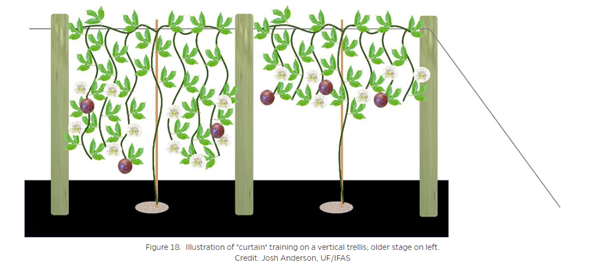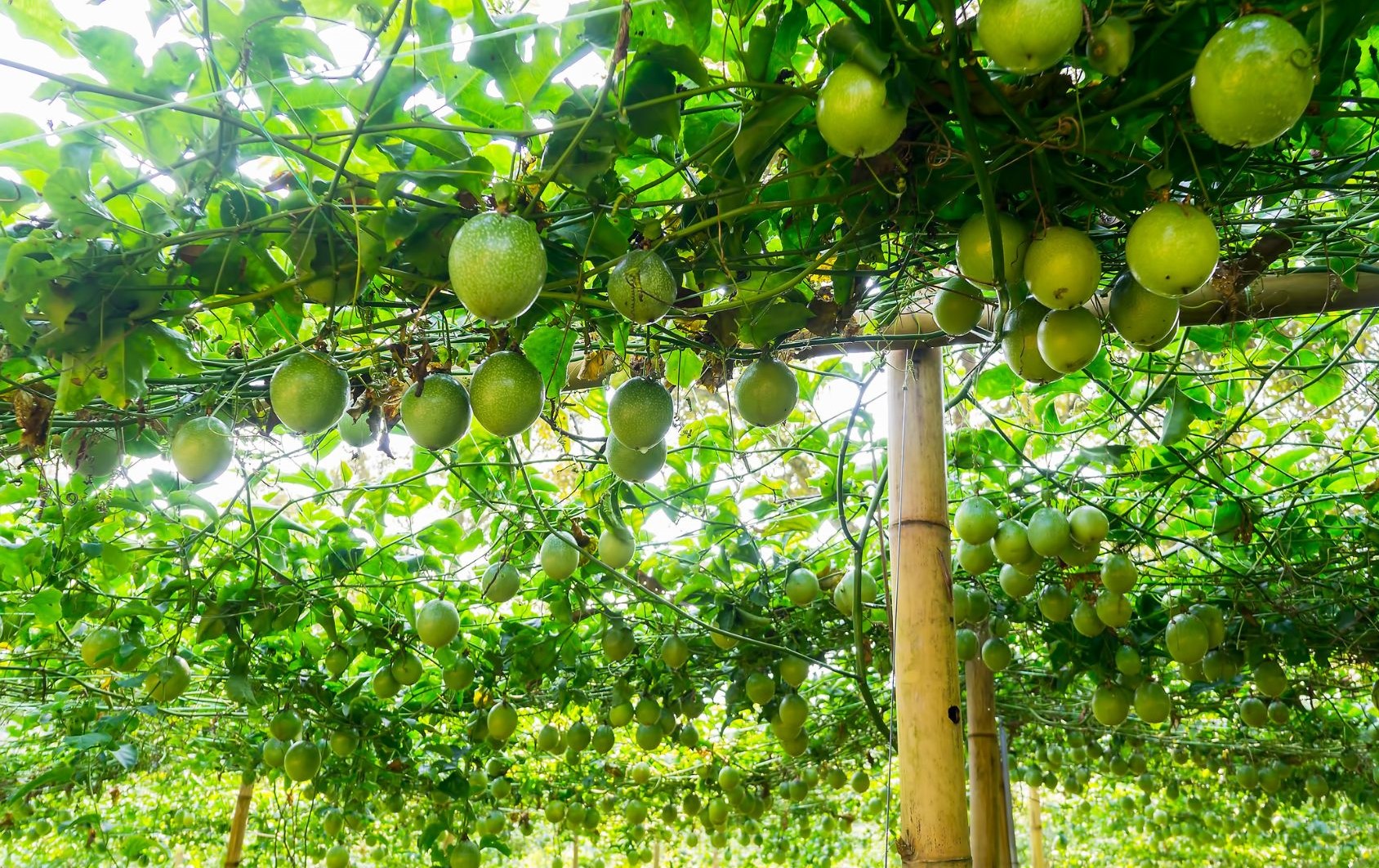Training and Pruning of Passion Fruit Plant
Training of Passion Fruit
Passion vines naturally climb up any available trees or rocks and spread out to catch the available sunlight. In cultivation, vines should be trellised and trained to obtain maximum growth and yield. Trellising decreases moisture between the leaves, improves light penetration, reduces vine dangling, and the risk of disease outbreaks.
The most common training system is the “curtain.” Young vines are trained to a vigorous, up-growing single leader stem (trunk) to reach the top of the trellis. Once there, all lateral shoots that grow on the trunk below the wire should be removed. Additionally, the grower should select 2 vigorous shoots (primaries) to grow along each wire in opposite directions. In 2-wire trellis, we have 4 sprouts growing.
After that point, the vine should be left to grow without pruning throughout the season since the more vines there are, the more bearing surface there will be. The secondary and tertiary shoots that will grow are the fruiting wood, bearing the fruits.
Ideally, two vines of each plant are permitted to grow and run along the trellis wire, one in each direction. Laterals from these main vines then grow downwards, bearing the fruits.
https://edis.ifas.ufl.edu/publication/HS1406
Pruning of passion fruit
Passion fruit farmers are advised to apply light and selective pruning of the vines to boost new growth, increase yields, decrease dangling, facilitate harvest, and improve the efficiency of plant protection application (with canopy spraying). Pruning should occur at the end of the annual production cycle of the plants when they are not actively growing. In regions with warm winters, pruning can be performed right after harvesting. Alternatively, in areas where the temperature drops during winter, the passion fruit vines are pruned in late winter or early spring.
The passion vine is a short-lived perennial. Some yellow passion fruit vines will live for up to 10 years. However, the average lifespan of passion fruit vines is around 3-5 years. A vine with excessive deadwood may have lost so much vigor, and it should be removed to be replaced by a young, healthy plant. So one of the priorities when pruning is to remove all dead and weak-old wood. The vines with weak growth and the secondary shoots (that will produce the fruits) should be cut back by at least 1/3 or 15 cm (6 in) above the ground. Lateral secondary vines 2-3 years old that give no or low production should be removed (close to the main stem leader and the trellising wire). The grower should remove the vines that crawl into the ground or are about to reach the soil.
Important notes:
- Avoid pulling the cut part of the vines right away, especially if they are tangled with other “alive” vines, because you may damage the plant. It is best to leave them dry first and then remove them.
- Farmers should leave sufficient canopy to grow and cover the fruits in areas with intense sunlight and very hot summers to protect them from sunburn.
- It is important always to disinfect pruning shears or scissors, using a 10% bleach solution between each pruning to avoid spreading disease from vine to vine.
References
- https://edis.ifas.ufl.edu/publication/HS1406
- https://scholarspace.manoa.hawaii.edu/
- https://ufdcimages.uflib.ufl.edu/IR/
- https://naads.or.ug/passion-fruit-production/
- https://www.ptccb.org.gy/

Further reading
- Passion Fruit: History, Uses and Nutritional value
- Passion fruit: Types-Varieties of Passion Fruit and Plant Characteristics
- Passion Fruit: Soil & Climate Requirements, Land Preparation and Planting
- Propagation and Trellising of Passion Fruit plants
- Training and Pruning of Passion Fruit Plant
- Passion Fruit Plant Care: Irrigation and Fertilization of Passion Fruit
- Important Passion Fruit Diseases
- Important Passion Fruit Pests
- Passion Fruit: Harvest, Yield and Storage










































































